HAWKER HUNTER T7 model in 1/72 scale
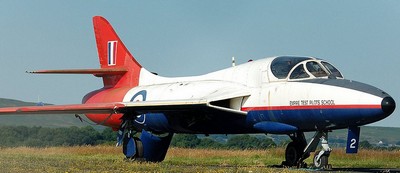
The Hunter is one of the most famous British jet aircraft in history. Of the British Hawker Hunter aircraft many models have appeared in plastic modelling history. These pages will comment on some of the Hunter kits in 1/72 scale.
The first production
Hunter designated F1 that entered service in 1954. Production of
the Hunter continued until 1966 with the FGA. 9 being the definitive version.
Over 700 earlier
versions of the Hunter were produced, mostly F. 6 aircraft, were converted
to FGA 9 standards that was designed for ground attack.
For more information about the real plane and the 1/72 kits, check out the references on this page.
Hunter T7 of the Empire Test Pilots School, UK
I had a very nice decal sheet for
a two seater Hunter in a Raspberry Ripple scheme: AIRDECAL, set 7211,
Raspberry Ripple PART 2. It has also decals for a Hunter T7 with serial
XL564 or XL612 as used at ETPS Boscombe Down 1989.
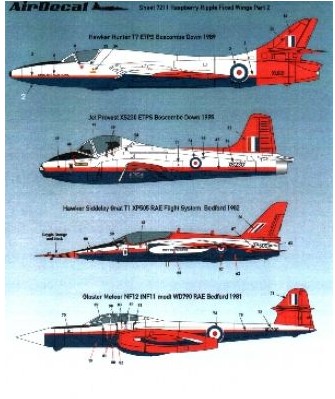
I also found in the stack a Revell
Hunter and a very old AEROCLUB vacuform conversion set, seen here:
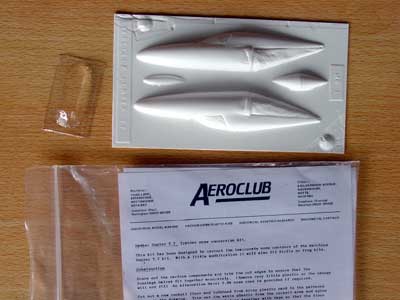
It was decided to do a simple build, combining the set with the good Revell 1/72 Hunter kit. (Note: the Matchbox 1/72 Hunter that includes parts for a two seater could also have been used, but I thought is was not so accurate as combining the AEROCLUB set and REVELL kit).
(Nowadays, LF MODELS has resin conversion sets for various two seat Hunter marks, including set #7293 for a T7. These are probably much better to use and accurate to be used with the Revell kit. The set are quite expensive however)
So later on, this choice with the AEROCLUB set was not so good. It turned out that the width of the 2 AEROCLUB vacu parts of the fuselage is too small and the two seater cockpit and canopy also much too small. It was decided not to bother with correcting this, the model was simply completed.
SO, WHAT WAS DONE?
The Revell kit of the F6 (no #04350)
was used for the rear fuselage, wings and details like the undercarriage.
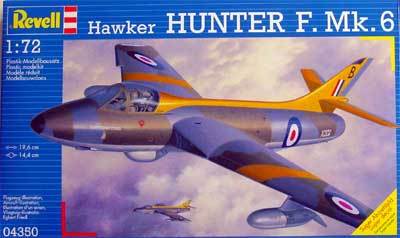
The Revell parts
are seen
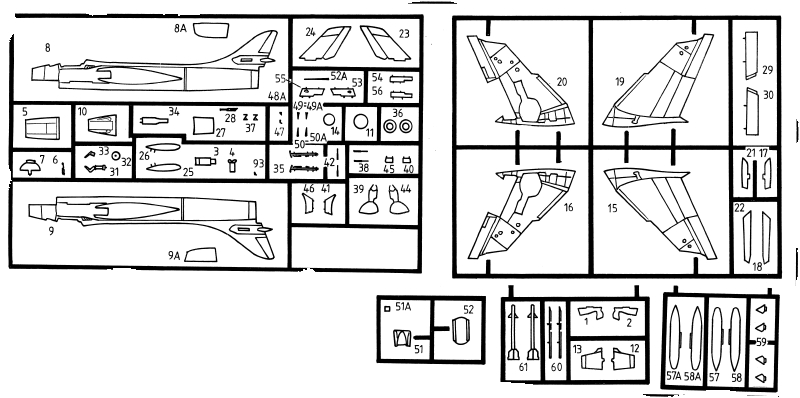
with here the
fuselage...
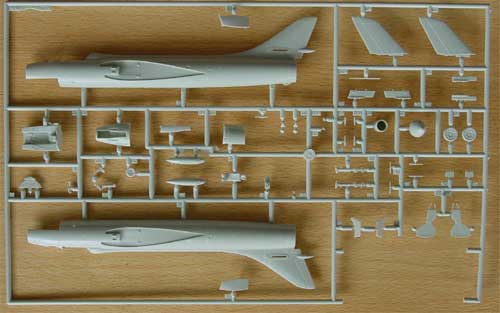
The 2 vacuform
parts were cut around their edges and sanded/ separated from their vacu
backing sheet.
Next, as now
the length of the nose section was clear, a cut was made in the Revell
fuselage parts with a razor saw as seen here:

The Revell wing parts were simply
used.
NOTE: the wing
saw tooth in the Revell parts should be 2 mm more inboard; this was not
further corrected but left as in the kit.
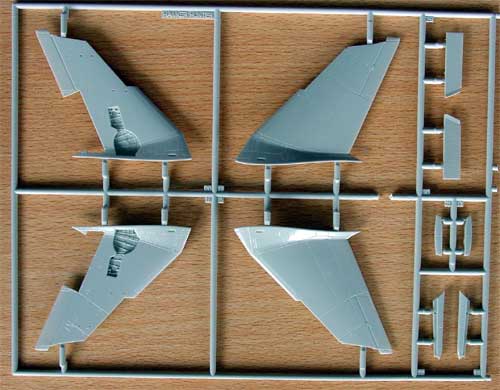
The wing halves were assembled and
set on the changed fuselage:
The fuselage spine needs also removal from the Revell kit as seen here, the two seater spine has a different shape as the single seater spine.
 ....
....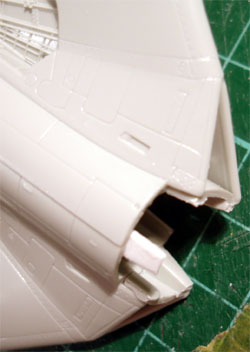
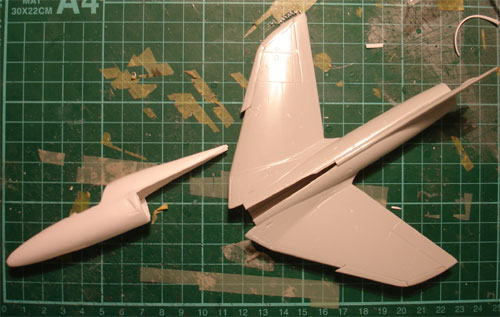 .
.
A new cockpit bulkhead was made from
card, the parts in the assembly are seen here:
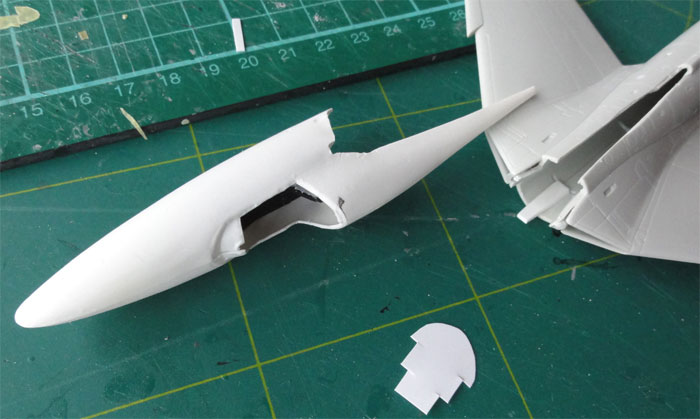
The spine needs some filling and sanding,
as well as the wing root and intakes.
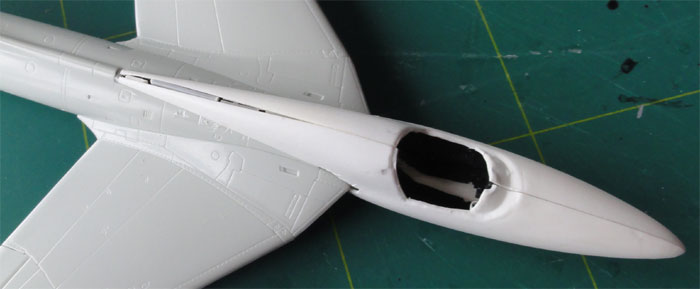
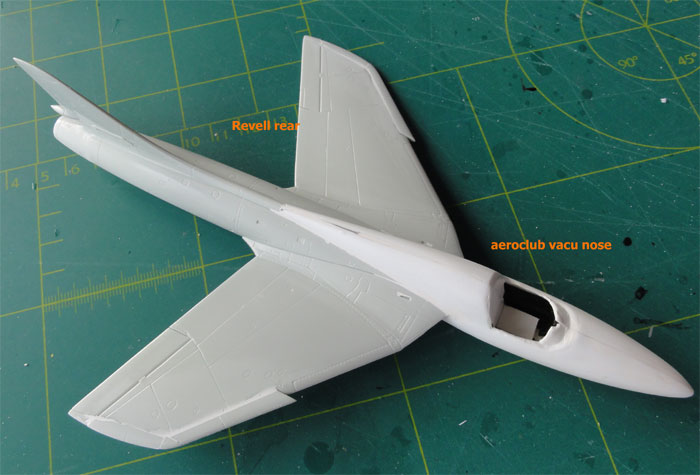
After basic assembly, a single "Sabrina"
was added on the right lower fuselage. Now the model got a base grey coat
to check for any flaws. Any filling and sanding was done as needed.
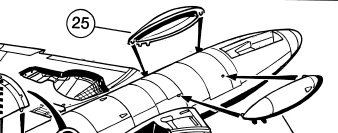
Next came that overall red-white-blue
Boscombe Down colour scheme, that was airbrushed.
Colours needed are white, red and
blue, using:
White: Revell acrylic 360301
Red: Revell acrylic 36131
Blue: Revell acrylic 36156
(these are the paints in the Revell
blue square paint containers...)
Start with airbrushing white overall. After drying mask the red areas with a low tack masking tape (like Tamiya), spray the red and similarly airbrush the blue areas.
Next came the AIRDECAL decals, these are quite brittle but went on fine.
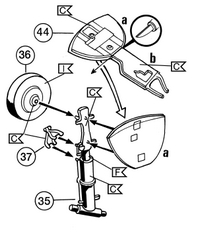
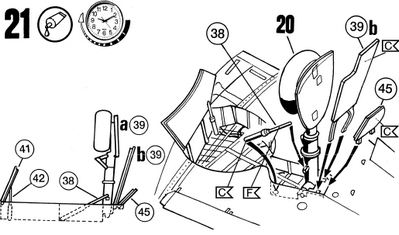
The rest of the model was simply
completed as per Revell instructions, like fitting the undercarriage but
without the stores.
A pitot tube was added on the wing
tip.
The AEROCLUB canopy , being too small,
was simply set open and hand painted. This will make the in-accuracies
less obvious.
The windscreen was carefully fitted,
some white glue was used to close the gaps. After drying, this was painted
black like the anti glare panel.
![]()
The result is seen here:



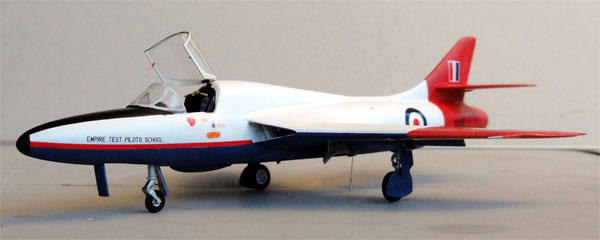
Note the "Empire Test Pilots School"
title on the nose. This T7 was used in the nineteen eighties.
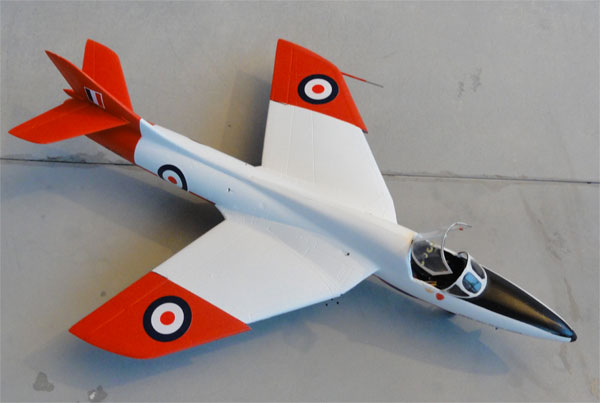

(you will notice this turned out
to be tail sitter... well, I found out to late... a smal metal wire was
set below the fuselage)

XL612
Hunter T7 ETPS
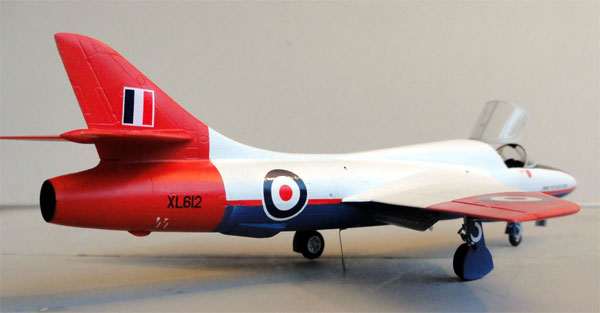


Although not very accurate, an eye
catching two seater Hunter T7 in the attractive red-white-blue Raspberry
scheme. A nice addition to the Boscombe
Down and RAe Bedford test aircraft collection.

(c) Copyright Meindert "designer"/ All rights reserved. Your comments are welcomed by webmaster
January 14, 2013
Updated January 2, 2016